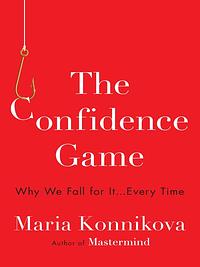You need to sign in or sign up before continuing.
Take a photo of a barcode or cover
informative
medium-paced
at times she gets way too into "why do people become con artists" all of which i generally found pretty unconvincing and clearly influenced by pop psychology, but the "why do people fall for cons" chapters, which make up the majority of the book, are FAR more credible and interesting. and all the stories were really fun all the way through
adventurous
informative
reflective
medium-paced
reflective
medium-paced
not a true dnf--i just dont have time for it right now and dont know when i'll get back to it!
informative
inspiring
reflective
medium-paced
I loved this book and can’t wait to reread it. I would apologize for being insufferable and talking it about it to all my friends but since I’ve already been doing this throughout reading, we’ll skip the apologies.
It's okay, but not great. There are a lot of anecdotes and a few psychology studies about cons.
informative
slow-paced
A clever look into the psychology of scammers. One of the more depressing points of this book is that our very nature as social beings means that no one is immune to the con.
Each chapter focuses on a specific aspect of a con, each with it's own unique name (the play, the rope, the tale... all the way through the blow-off and the fix). Examples of cons -- some famous, but most of them not -- illustrate each of these stages. I found myself thinking, "Geez, who would fall for this," but when I put myself in the victim's shoes and head space, I could totally get it. Along with the examples, Konnikova highlights studies in psychology, economics and other social sciences that explain why these cons work. Interesting to think that grifters have long had a grasp of human behavior that scientists are only recently starting to explain.
Beware -- this book goes a long way toward dismantling one's faith in humanity.
Each chapter focuses on a specific aspect of a con, each with it's own unique name (the play, the rope, the tale... all the way through the blow-off and the fix). Examples of cons -- some famous, but most of them not -- illustrate each of these stages. I found myself thinking, "Geez, who would fall for this," but when I put myself in the victim's shoes and head space, I could totally get it. Along with the examples, Konnikova highlights studies in psychology, economics and other social sciences that explain why these cons work. Interesting to think that grifters have long had a grasp of human behavior that scientists are only recently starting to explain.
Beware -- this book goes a long way toward dismantling one's faith in humanity.
informative
medium-paced
informative
medium-paced





